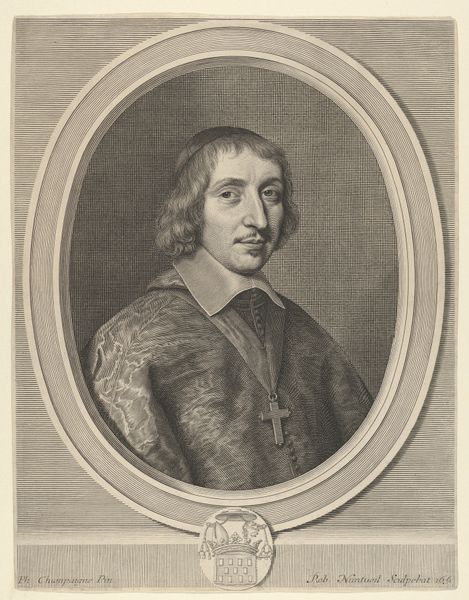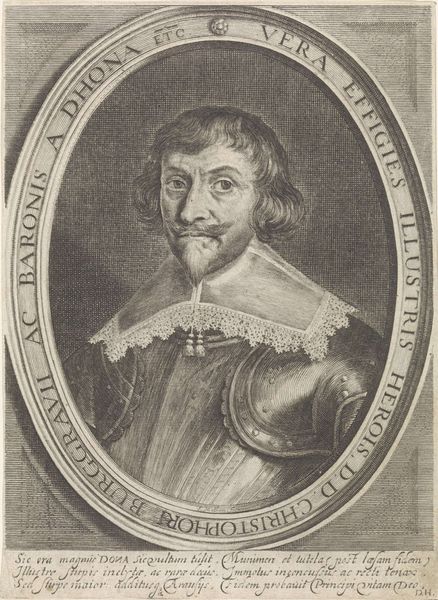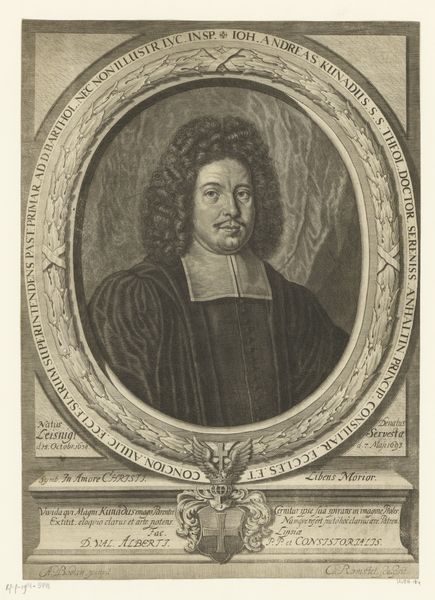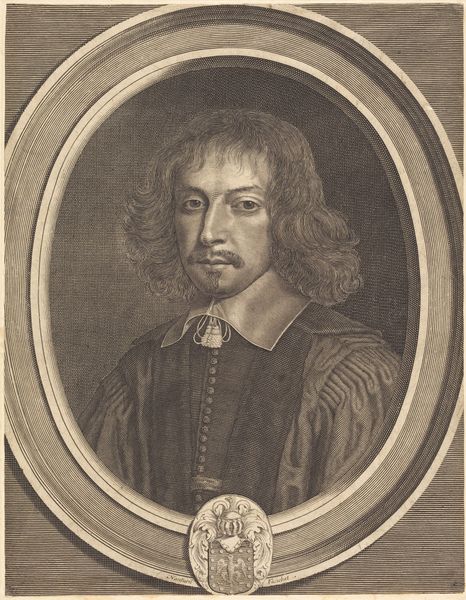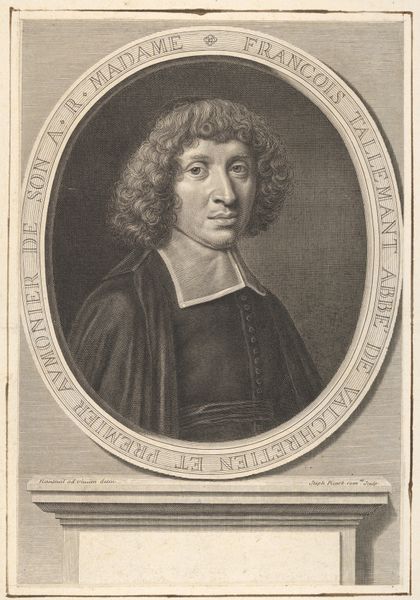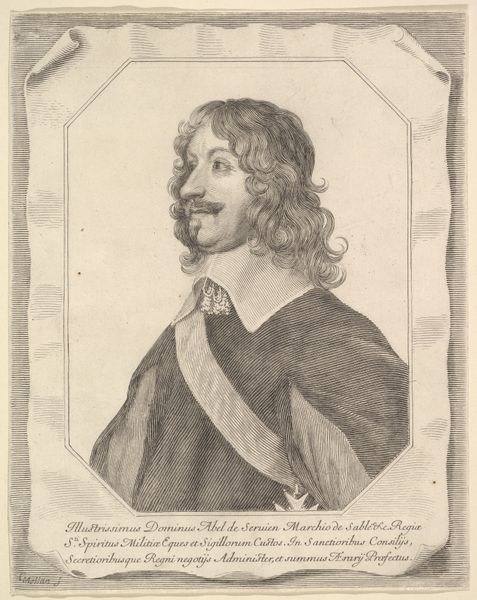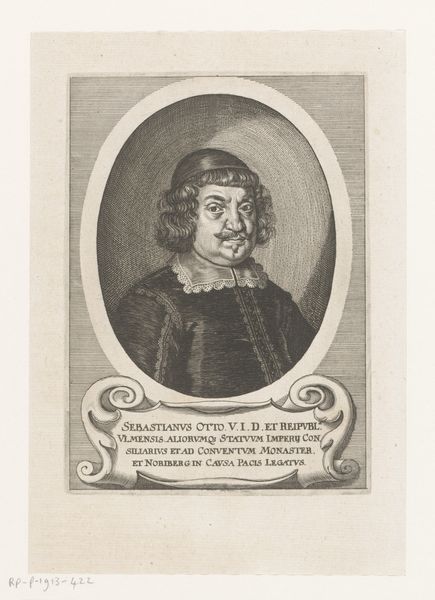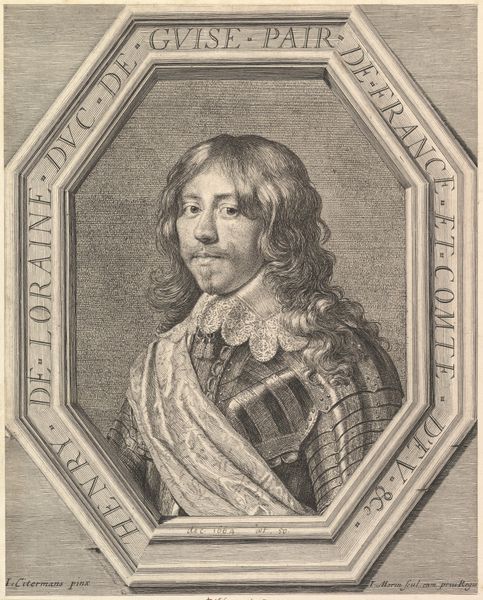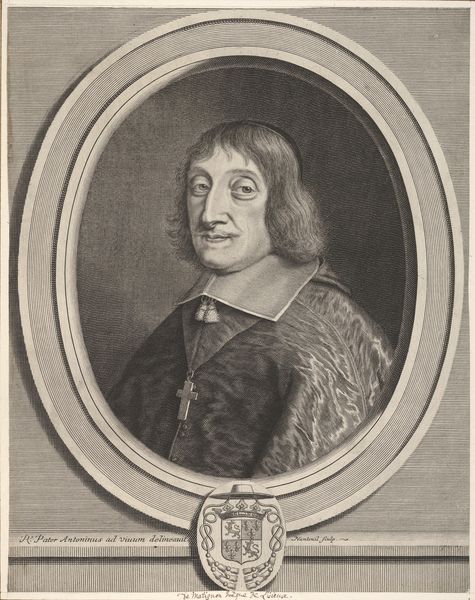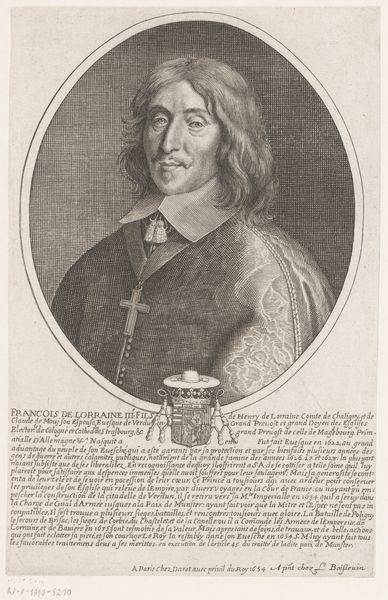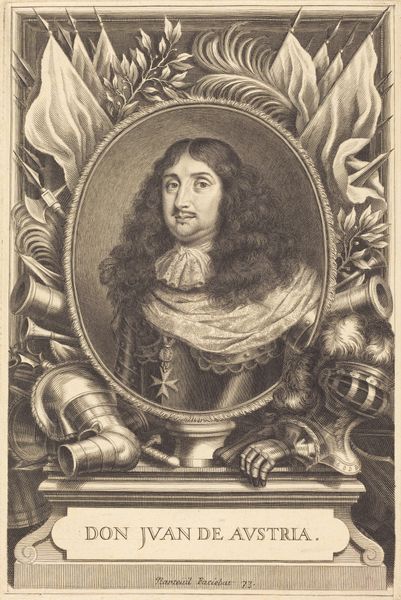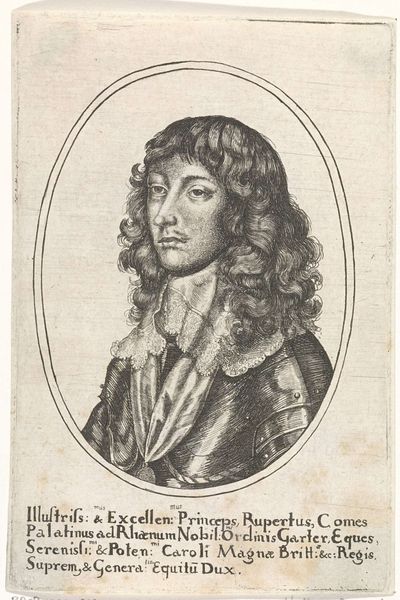
engraving
#
portrait
#
baroque
#
old engraving style
#
figuration
#
portrait reference
#
line
#
history-painting
#
engraving
Dimensions: height 176 mm, width 130 mm
Copyright: Rijks Museum: Open Domain
Editor: This is a portrait of Bishop Zonga Ondedei, created in 1659 by Giacomo Piccini. It’s an engraving and there’s such formality to it, even with the slightly whimsical frame around the subject. It's quite striking how the artist was able to convey such detail through lines. What can you tell me about its historical context? Curator: The Baroque era certainly relished this kind of formal representation. Consider the social function of portraits like this during that period. They were often commissioned by the Church or nobility to project power, status, and legitimacy. This engraving serves as a public declaration of Bishop Ondedei’s position within the church hierarchy. Editor: So it’s less about capturing an individual personality and more about projecting an image? Curator: Exactly. Think about the visual cues: the ornate frame, the Bishop's vestments. Every element reinforces his authority. The Baroque style, known for its drama and grandeur, amplified the statement of power. Does that contextual understanding change your initial reaction? Editor: It does. It helps me see that the seemingly "whimsical frame" is part of this very carefully crafted image, and underscores, rather than contradicts, his position of power and respect. Curator: Precisely. This artwork allows us to explore the intersection of art, power, and social structures. How institutions use art for self-representation. Now when you look at other art from this period, what will you be looking for? Editor: I'll be paying more attention to who commissioned it, and the story it's trying to tell about *them*. That is, to what degree the subject controls the presentation of power. Thanks, that makes me appreciate it a lot more!
Comments
No comments
Be the first to comment and join the conversation on the ultimate creative platform.
